My new series featuring Victorian paintings, English Tudor art and Craftsman style art.
Over the years I have created hundreds of portraits of homes and historic buildings, so you can imagine that I have lots of favorites and in many different architectural styles, But three styles really stand out. They are each very distinctive and have stood the test of time. They are the Victorian style, Tudor style and Craftsman style.
I decided to select some all time favorites within these styles and share their beauty but in a different way. I mixed these architectural art forms with other very different art forms, namely some of my favorite fabric patterns and items that I have collected over time. Many can be found in my home. Some are from overseas travels, including shawls and clothes. One of the designs is a persian carpet and another is from a brocade cushion. As different as they are, I feel they all integrate well with these architectural works of art.
But I will let you decide and may these be the first of many more.
Victorian style paintings
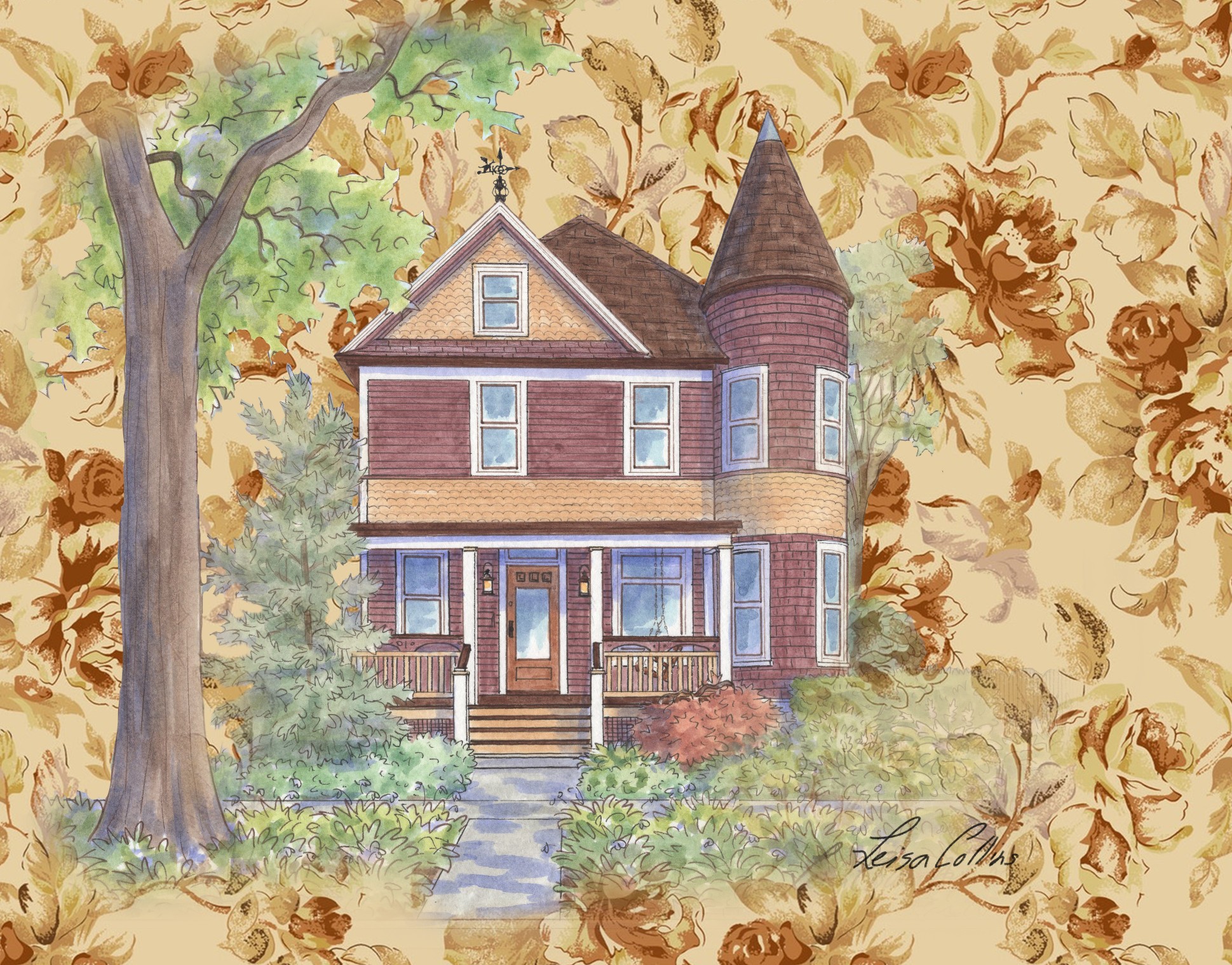
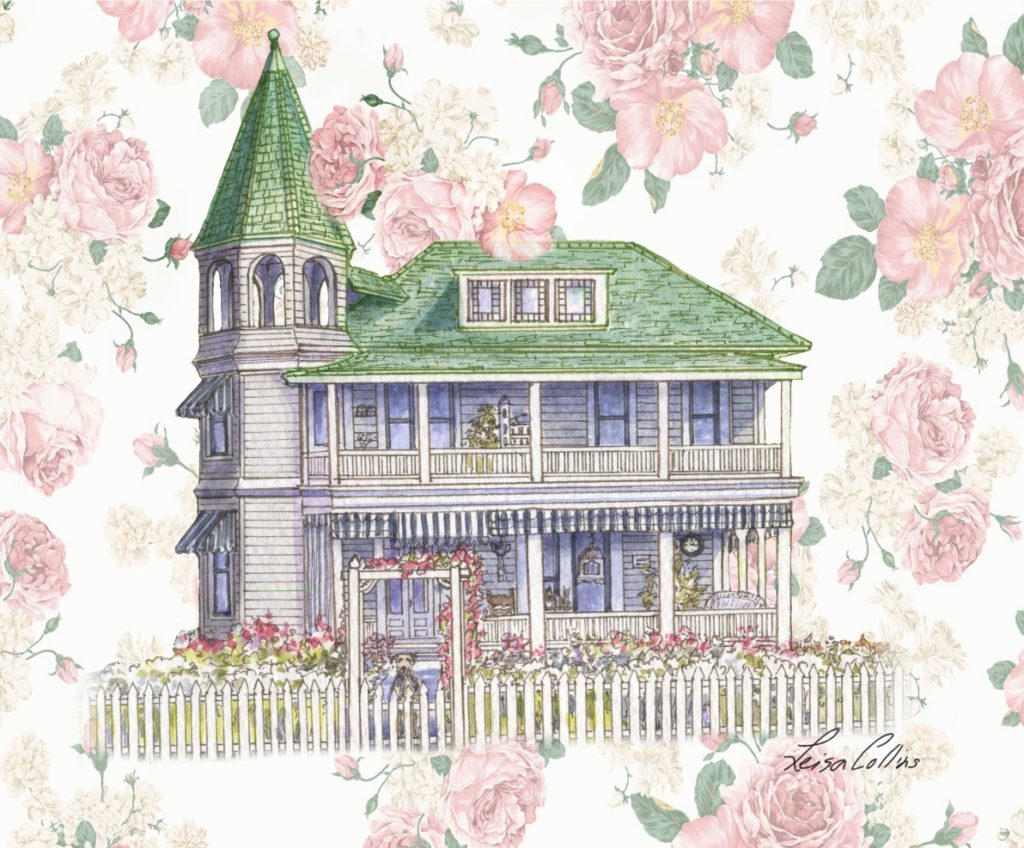

English Tudor style art:

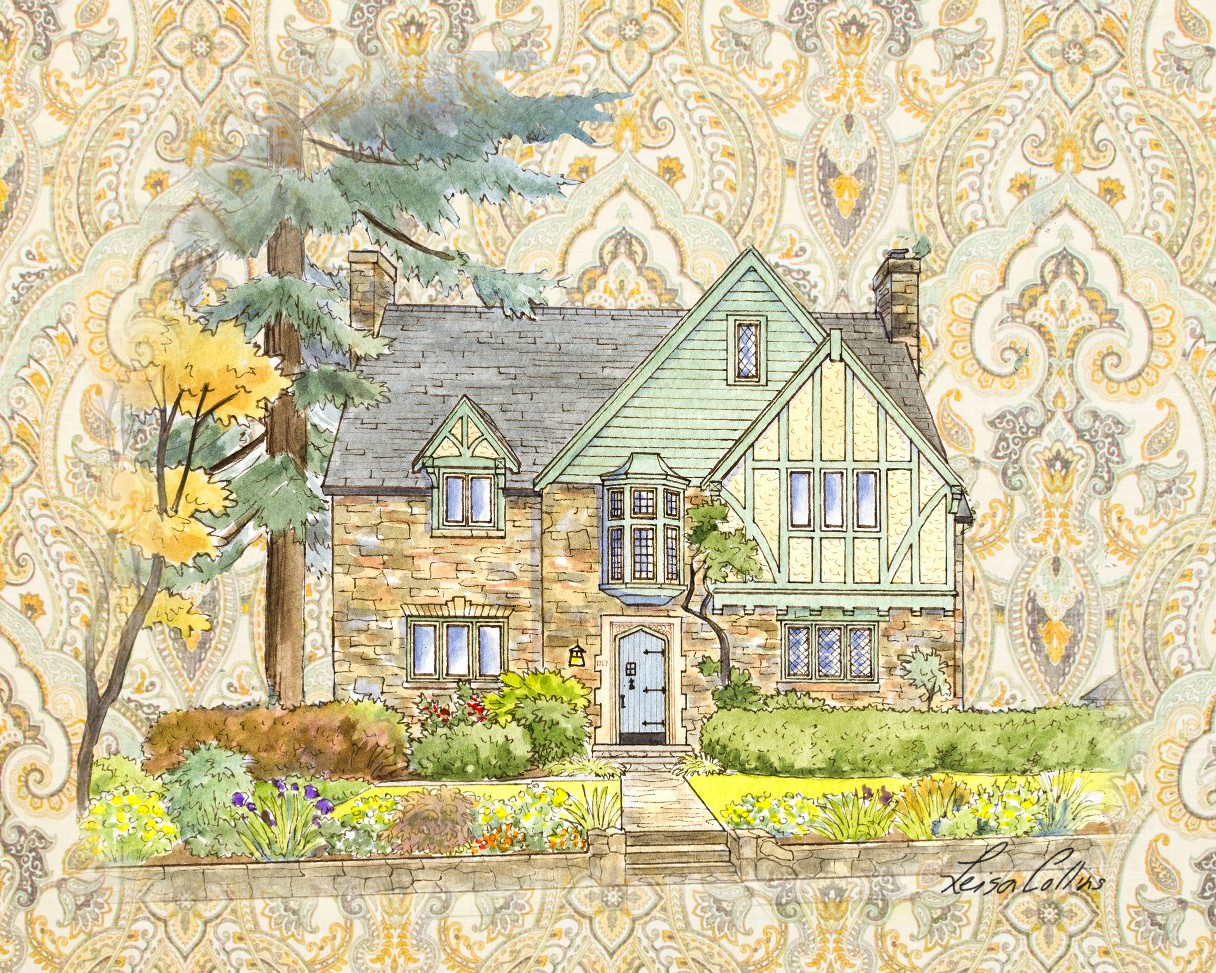

Craftsman style art
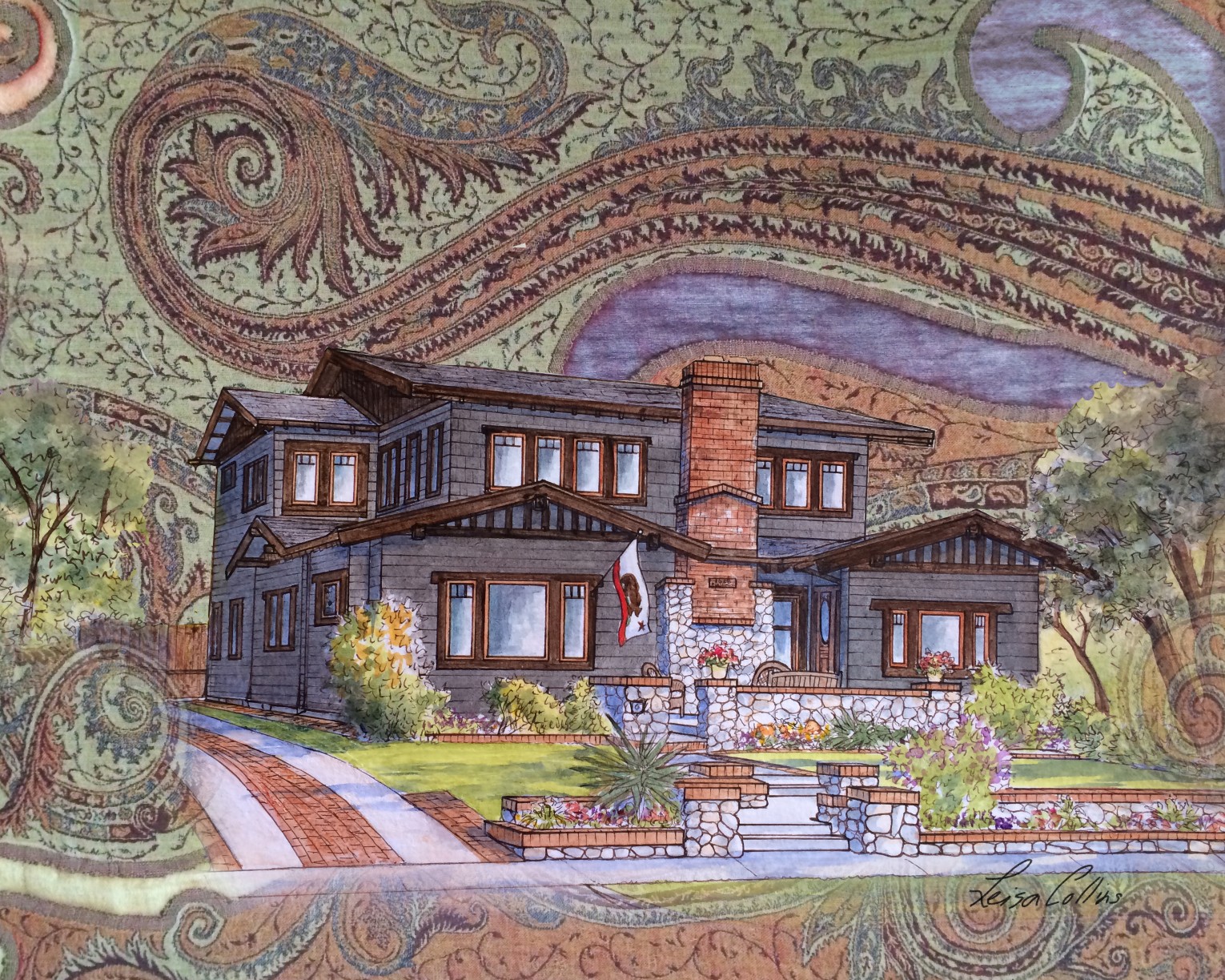
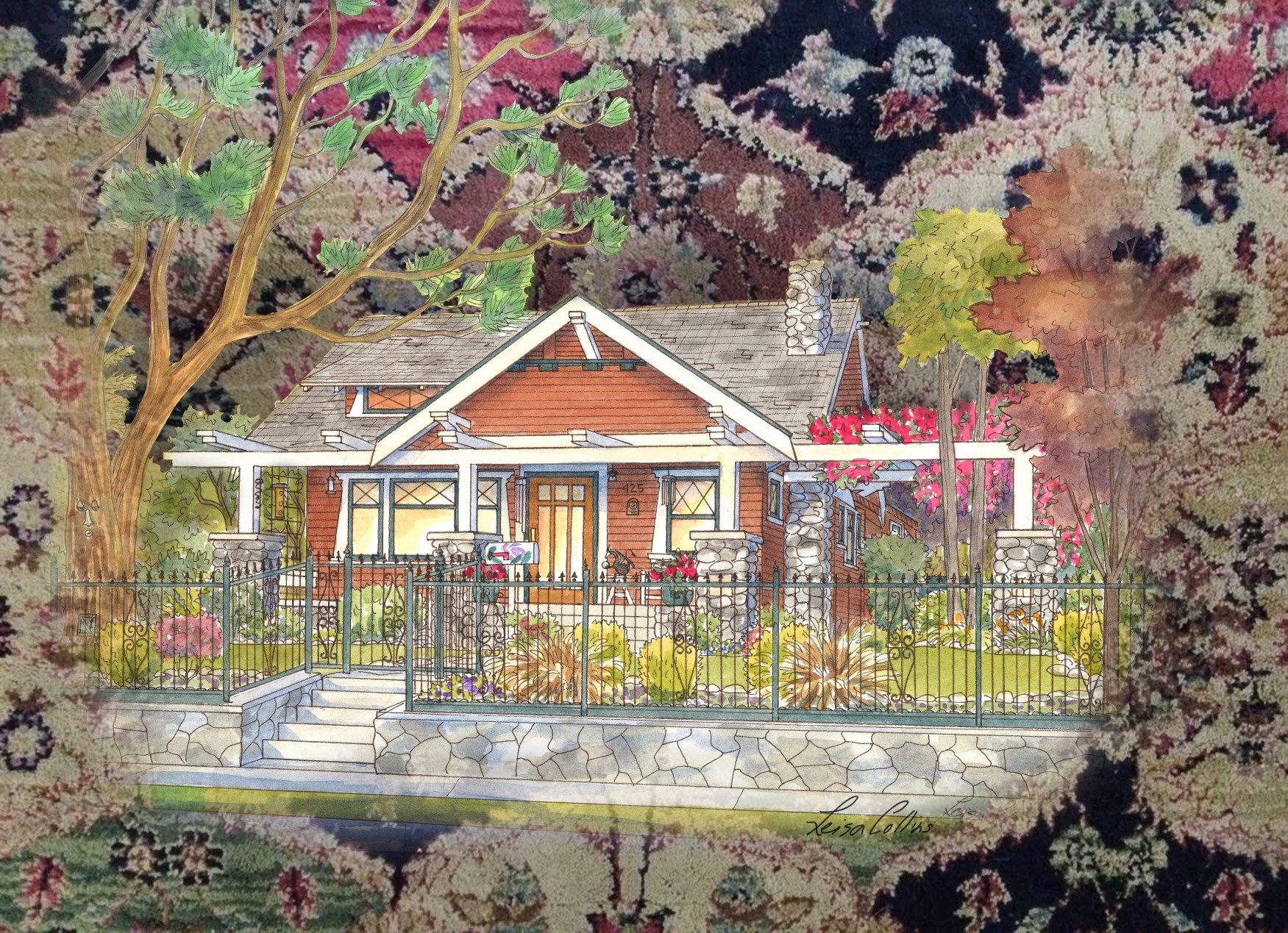
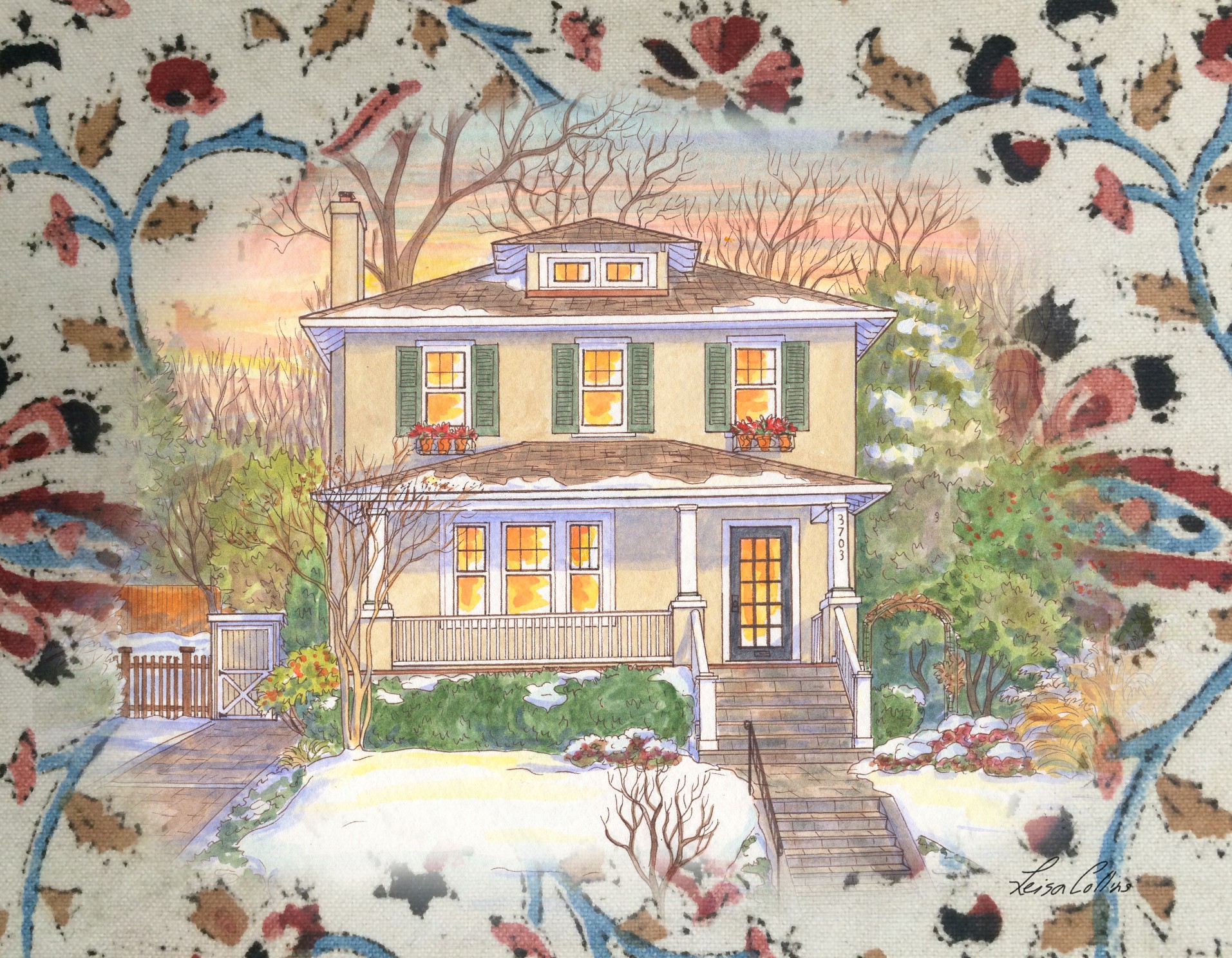
Introduction to Collage Art:
In May of 1912 Pablo Picasso glued oilcloth to the surface of “Still Life with Chair Caning”. That same year, Georges Braque glued imitation wood-grained wallpaper to his “Fruit Dish and Glass”. Braque’s work is called papier collé (glued or pasted paper), a specific type of collage.
Collage also appeared in other art movements such as Dada and Surrealism between 1916 through 1923, Hannah Höch (German, 1889–1978) glued bits of photographs from magazines and advertising in such works as “Cut with a Kitchen Knife“ (1919-20). Fellow Dadaist Kurt Schwitters (German, 1887–1948) also glued bits of paper he found in newspapers, advertisements, and other discarded matter beginning in 1919.
All of this work from the first half of the 20th century has inspired new generations of artists and many continue to employ collage in their work.
Collage is also used to add meaning and commentary to art pieces. This is most often seen in contemporary art. Using magazine and newspaper clippings, photographs and printed words, many artists use these to convey their message. Therefore the possibilities of using collage to address a variety of issues are endless.
I hope you have enjoyed my new work and have found this article informative.
Until next time.
Leisa


